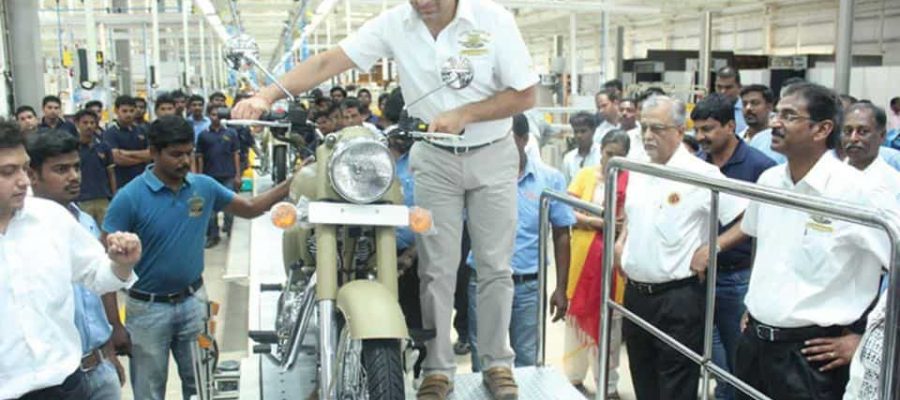“She has mood swings. There’s drama on a daily basis,” says Bobbee Singh. He’s talking about the motorcycles he fixes up, vintage Royal Enfields that he scours the country to find parts for, and then rebuilds at his workshop in Old Delhi.
Singh, who opted out of school to follow his passion for motorcycles, is an Enfield enthusiast. He and his team have restored about 200 Royal Enfields since the early 1990s. It is stories like this that Amrit Raj, 34, tells in his book, Indian Icon: A Cult Called Royal Enfield (2020; Westland).
As the former national corporate editor with Mint, Raj wrote extensively on the automobile sector, among other fields. Those years of experience, and hundreds of hours of interviews with various Royal Enfield stakeholders have gone into his book.
Vikram Lal and his son Siddhartha Lal, who own the company that produces the iconic bike, are featured, alongside associates such as Subodh Bhargava, who was CEO and chairman of Eicher Motors in the pivotal turn-of-the-century period.
The Royal Enfield was originally produced in England, and traces its roots in India back to the early 20th century, when FB Stewart, the famed photographer who filmed the Delhi Durbar for Viceroy George Curzon in 1903, was also sole importer of the motorcycles.
After that, traces of the bike in the country die down until the Indian Army places an order for 500 units of the Enfield Bullet with Madras Motors. This led the British company to set up a factory in Chennai, then Madras, in 1956.
The first made-in-India Enfield rolled out of the factory in 1962.
The book traces how the bike flourished in pre-liberalisation India’s protected market conditions, popular with the Army and policemen, and emerged as one of the few status symbols available at the time.
Then came competition, in the form of the Indo-Japanese brands such as Hero Honda, TVS-Suzuki and Escorts-Yamaha. Their bikes were more fuel-efficient and affordable, while the Royal Enfield had undergone little to no technological advancement. Its then promoter, a Chennai-based business family, saw revenues plummet, and the Lals of Eicher Motors picked up a 26% stake in 1990, going on to fully own the brand by 1994.
Now Vikram Lal had to decide what this bike wanted to be in a rapidly liberalising nation and an increasingly crowded market.
“Blame it on his leadership or the company’s risk-averse attitude, Eicher was unsuccessful in becoming a consumer brand. Lal grappled with the idea and tried to understand what a good consumer brand could be,” Raj wrote in the book.
The author talks of how brand management veterans V Sunil and Mohit Jayal joined the effort to revitalise the Enfield, staying on the job until 2016. How RL Ravichandran redesigned it, and Sachin Chavan masterminded the Himalayan Odyssey and Rider Mania biker rally events that would help connect with a young, adventurous market.
“Between 1990 and today, the company has worked relentlessly to carefully modernise its motorcycles and reposition the brand,” said Raj. “It has beautifully stretched the brand known to be owned by a policewallah or a doodhwallah to the one that appeals to millennials.”
The multipronged approach worked. Between 2008-09 and 2018-19, Royal Enfield sales went from about 15,000 to over 820,000.
The book explores the business culture of grit and tenacity that enabled this, taking snubs and failures in its stride. Plans to manufacture cars never got off the ground; the company was snubbed by the American motorcycles giant Harley Davidson in the mid-1990s. “But they kept trying,” Raj said.
The company is now at a new crossroads, he writes in the book. “A lot rides on communication. The strategy to achieve a premium positioning would certainly fall flat if the pitch is just this — ‘a world class bike from India’. In developed markets, one cannot compare Royal Enfield with the premium positioning of a Harley Davidson or Triumph.”
Source: Read Full Article


